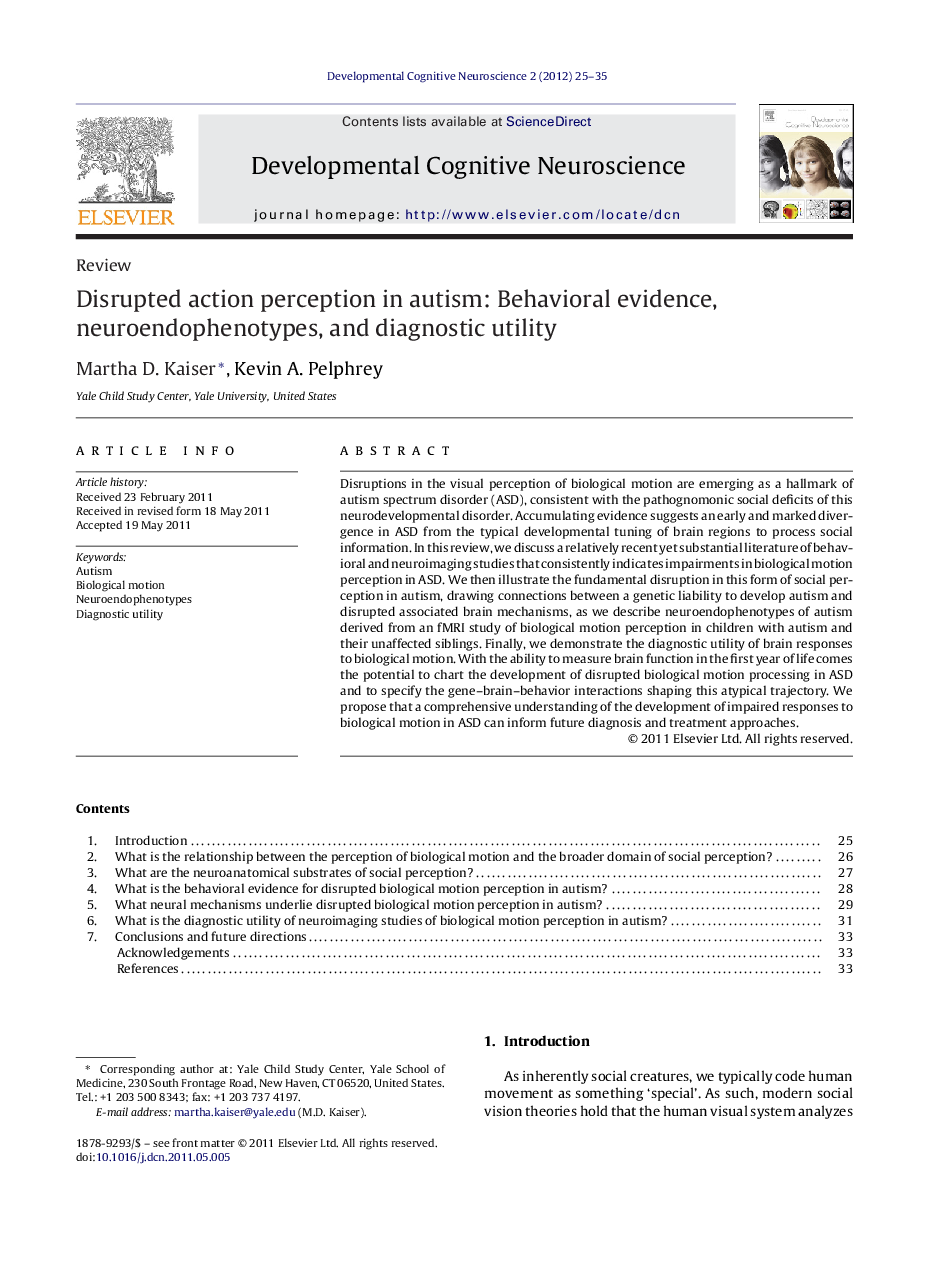| Article ID | Journal | Published Year | Pages | File Type |
|---|---|---|---|---|
| 4316782 | Developmental Cognitive Neuroscience | 2012 | 11 Pages |
Disruptions in the visual perception of biological motion are emerging as a hallmark of autism spectrum disorder (ASD), consistent with the pathognomonic social deficits of this neurodevelopmental disorder. Accumulating evidence suggests an early and marked divergence in ASD from the typical developmental tuning of brain regions to process social information. In this review, we discuss a relatively recent yet substantial literature of behavioral and neuroimaging studies that consistently indicates impairments in biological motion perception in ASD. We then illustrate the fundamental disruption in this form of social perception in autism, drawing connections between a genetic liability to develop autism and disrupted associated brain mechanisms, as we describe neuroendophenotypes of autism derived from an fMRI study of biological motion perception in children with autism and their unaffected siblings. Finally, we demonstrate the diagnostic utility of brain responses to biological motion. With the ability to measure brain function in the first year of life comes the potential to chart the development of disrupted biological motion processing in ASD and to specify the gene–brain–behavior interactions shaping this atypical trajectory. We propose that a comprehensive understanding of the development of impaired responses to biological motion in ASD can inform future diagnosis and treatment approaches.
* Review of behavioral and neuroimaging literature on biological motion processing in autism. * Discussion of social brain mechanisms and their disruption in autism. * Presentation of neuroendophenotypes of autism from an fMRI task of biological motion perception. * Exploration of the diagnostic utility of brain responses to biological motion.
